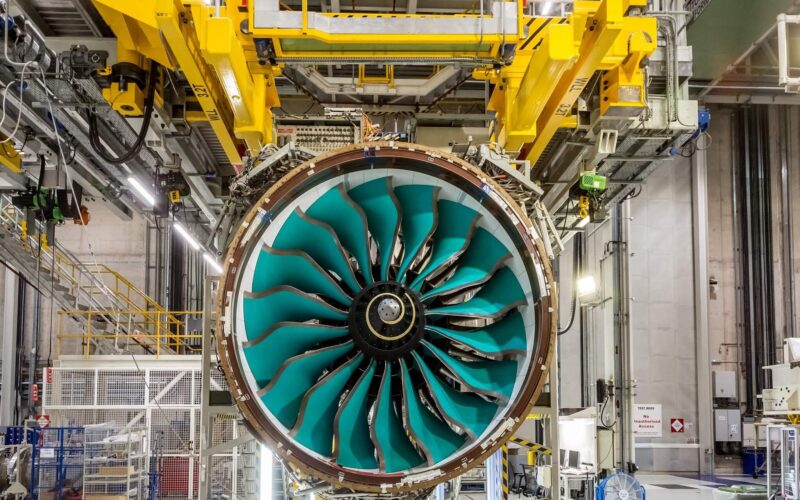Spanish supplier ITP Aero has used 3D printing to manufacture a Tail Bearing Housing (TBH) component for the first Rolls-Royce UltraFan demonstrator engine.
The key structural component connects the engine to the aircraft and houses part of the engine bearings that support the shaft for the engine fan. ITP Aero used an additive technology, better known as 3D printing, to make it.
Built to withstand various loads of the working UltraFan engine, the TBH also comprises removable sound attenuation panels, that were also manufactured using the 3D selective laser melting method.
According to ITP Aero, the sound attenuation panels should help the UltraFan engine manufacturer Rolls-Royce to reduce the noise emitted by the new turbine by 50%.
“Our commitment to additive manufacturing technology is part of our focus on digitalization to make ITP Aero a more agile, resilient, and sustainable leader,” Erlantz Cristobal, iTP Aero executive director of technology and engineering was quoted in the company’s statement.
In the coming weeks, ITP Aero plans to assemble the TBH at Rolls-Royce’s Derby facility in the United Kingdom.
What is the UltraFan?
The first UltraFan demonstrator UF001 is hotly-tipped to take the title of the world’s largest engine, as its fan diameter will reach 355.6 centimeters (140 inches). Rolls-Royce says the more fuel-efficient engine will be capable of powering both narrow-body and wide-body aircraft.
According to Rolls-Royce, the key engineering features of the UltraFan include a new Advance 3 core architecture combined with its ALECSys lean-burn combustion system, which will allow the UltraFan to deliver maximum fuel burn efficiency and low emissions simultaneously. To reduce the weight of the new engine, the manufacturer decided to use carbon titanium fan blades and composite casing.
The company counted that such a decision should cut the engine weight by up to 1,500 pounds. In the meantime, Rolls-Royce will also use ceramic matrix composite (CMC) components, which are expected to operate more effectively in high-pressure turbine temperatures.
For testing purposes, Rolls-Royce built a new Testbed 80 facility, where engineers plan to check each blade using real-life test data technology which collects data from more than 10,000 parameters and can detect the tiniest of vibrations at a rate of up to 200,000 samples per second.
Rolls-Royce was eager to enter the UltraFan into service in 2025, but due to the global pandemic, the company has changed its plans. Now, the manufacturer expects to make all the final touches in the new engine assembly and start the testing processes in Testbed 80 in 2022.
The new engine should enter the market in 2030.

